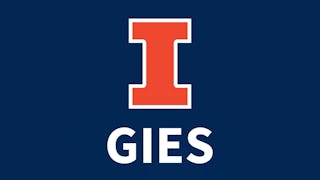This course will examine state and local tax laws prevalent in the United States today. The course will consider the historical progression of state and local taxation, the power of states to tax (and the limitations on that power), and planning strategies for minimizing the impact of state and local taxation. Discussions will focus on income taxes, sales taxes, and property taxes.

Ends tomorrow: Get a Black Friday boost with $160 off 10,000+ programs. Save now.


(59 reviews)
Recommended experience
What you'll learn
Identify the most common types of taxes imposed by state and local governments.
Determine when a taxpayer has substantial nexus for various types of state and local taxes.
Analyze how a person or entity with multistate activities should allocate and apportion business and non-business income among states.
Discuss tax-planning techniques to minimize state and local taxation.
Skills you'll gain
Details to know

Add to your LinkedIn profile
36 assignments
See how employees at top companies are mastering in-demand skills

There are 8 modules in this course
In this module, you will be introduced to your instructor, the course, and to multistate taxation in general. Specifically, you will learn about the most common types of taxes used by state and local governments, the limitations on a state's ability to tax, and the current revenue challenges facing state and local governments.
What's included
5 videos8 readings3 assignments1 discussion prompt1 plugin
In this module, we will discuss the limitations that the U.S. Constitution and Congress can place on a state's taxing power. Our discussion will primarily focus on the Due Process Clause and the Commerce Clause. We'll also take a closer look at the Commerce Clause's substantial nexus requirement.
What's included
4 videos2 readings5 assignments
In this module, we will discuss sales and use taxes, which are typically excise taxes imposed on retail transactions to the ultimate end-user of a product. We will also discuss some of the various exemptions from the retail sales tax that states offer. And, we will look at the current sales tax landscape after the U.S. Supreme Court's recent ruling in Wayfair v. South Dakota.
What's included
6 videos7 readings5 assignments
In this module you will be introduced to how states tax income. We will discuss the history and development of state individual income taxes. We will then turn to how state's utilize the Internal Revenue Code as a head start for their own tax laws. Then we will learn about the two bases of state taxation, residency and source. And, how taxpayers may be eligible for a credit for taxes paid to other states.
What's included
6 videos7 readings7 assignments
In this module we will be introduced to corporate state income taxes and their history. We will also learn about the most important piece of federal legislation regarding state income taxation, Public Law 86-272. Finally, we will walk through the typical corporate income tax formula used by states to compute state taxable income and tax.
What's included
4 videos4 readings3 assignments
In this module we will discuss the general rules for allocation and apportionment. This includes differentiating between business (i.e., apportionable) and nonbusiness (i.e., allocable) income. We will also learn how to compute apportionment factors.
What's included
3 videos3 readings4 assignments
In this module we will learn about the different filing return filing methods (separate, consolidated, and combined) used by states for multi-entity corporate taxpayers. As a part of that discussion, we will discuss the unitary business rule and the constitutional limitations on certain return filing methods. We will then turn to discussing specialized apportionment issues surrounding combined (unitary) tax filing methods.
What's included
4 videos5 readings5 assignments
In this module we will learn about property taxes. We will discuss the history and development of property taxes. How property taxes are computed. And, common state constitutional limitations on property taxes.
What's included
5 videos5 readings4 assignments1 discussion prompt1 plugin
Build toward a degree
This course is part of the following degree program(s) offered by University of Illinois Urbana-Champaign. If you are admitted and enroll, your completed coursework may count toward your degree learning and your progress can transfer with you.¹
Instructor

Offered by
Explore more from Business Essentials
 Status: Free Trial
Status: Free TrialUniversity of Illinois Urbana-Champaign
 Status: Preview
Status: PreviewUniversity of Illinois Urbana-Champaign
 Status: Free Trial
Status: Free TrialUniversity of Illinois Urbana-Champaign
 Status: Preview
Status: PreviewUniversiteit Leiden
Why people choose Coursera for their career




Learner reviews
59 reviews
- 5 stars
85.24%
- 4 stars
11.47%
- 3 stars
3.27%
- 2 stars
0%
- 1 star
0%
Showing 3 of 59
Reviewed on Oct 24, 2021
This is a wonderful course to understanding taxes. The presentations are awesome! It would be awesome if it was accompanied with software training such as Vertex. Thank you, JoAnn

Open new doors with Coursera Plus
Unlimited access to 10,000+ world-class courses, hands-on projects, and job-ready certificate programs - all included in your subscription
Advance your career with an online degree
Earn a degree from world-class universities - 100% online
Join over 3,400 global companies that choose Coursera for Business
Upskill your employees to excel in the digital economy
Frequently asked questions
Once you enroll for a Certificate, you’ll have access to all videos, quizzes, and programming assignments (if applicable). If you choose to explore the course without purchasing, you may not be able to access certain assignments.
You will be eligible for a full refund until 2 weeks after your payment date. You cannot receive a refund once you’ve earned a Course Certificate, even if you complete the course within the 2-week refund period.
Yes! Coursera provides financial aid to learners who would like to complete a course but cannot afford the course fee. To apply for aid, select "Learn more and apply" in the Financial Aid section below the "Enroll" button. You'll be prompted to complete a simple application; no other paperwork is required.
More questions
Financial aid available,

